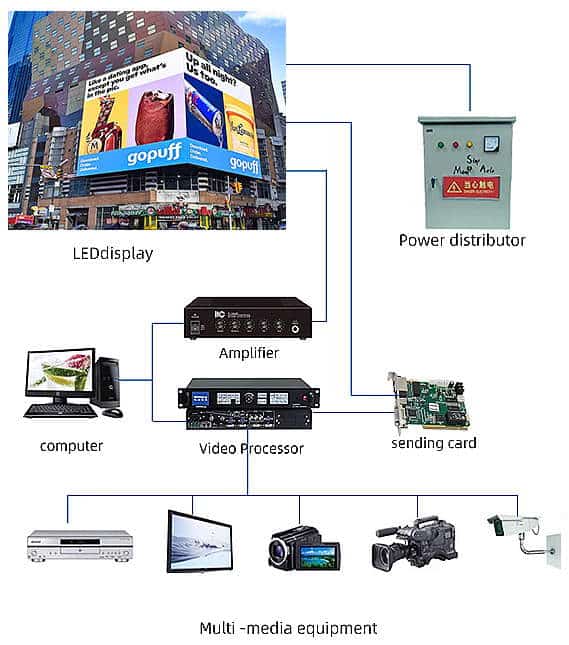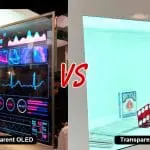How does LED display works?
Light-emitting diodes, more commonly known as LEDs, dominate every aspect of our lives today. There are countless electronic devices around us, such as smartphones, digital clocks, traffic lights, laptops, and large advertising screens, all of which feature LED displays. Due to their high energy efficiency and low energy consumption, LEDs are currently the most widely used commercial screen technology.
LED displays come in many shapes and sizes, but they all work on the same basic principle. They have a specialized diode that is electrically similar to a PN junction. This allows the LED display to pass current in the forward direction but block current flow in the reverse direction.
Working principle of LED Screen
LED is a semiconductor device that converts electrical energy into light energy using the principle of quantum theory. Based on this theory, when electrons move from a higher energy level to a lower energy level, they emit energy in the form of photons. This energy of a photon is equivalent to the gap between the lower energy level and the higher energy level. This phenomenon is commonly known as electroluminescence.
LEDs are made from a thin layer of heavily doped semiconductor material. Forward-biased LEDs produce light based on the element used as a semiconductor. The diodes in LEDs are forward biased. This allows electrons from the conduction band of the semiconductor to recombine with holes from the valence band. The energy level of holes is lower compared to the energy level of electrons.
So, when the recombination of electrons and holes releases a large amount of energy in the photothermal state, these energies are sufficient to generate photons. The photons then emit monochromatic or monochromatic light. Because the LED’s layers are so thin, photons can easily leave the junction and radiate away, producing a bright, colorful display.

How do light-emitting diodes produce color?
The colors of LEDs are distinguished by the materials used in the semiconductor components. Light-emitting diodes are made from different semiconductor compounds, including gallium arsenide (GaAs), gallium phosphide (GaP), gallium arsenide phosphide (GaAsP), and gallium indium nitride (GaInN). All these elements and their alloys are mixed in different proportions to produce unique color combinations at different wavelengths.
Different semiconductor compounds are responsible for emitting light in specific regions of the visible spectrum. The intensity of the light also varies from compound to compound. Thus, the choice of semiconductor material determines the wavelength of the photon, which in turn differentiates the color of the emitted light as a result.
Types of LEDs
LED is a next-generation technology, so it can be developed in different shapes, sizes, and can be given different functions according to needs.
Here, we’ll quickly discuss some of the well-known types of LED screens:
*Standard display
Standard or flat LED displays are the most widely used screens. They have flat, thin surfaces and consist of an array of light-emitting diodes to create high-resolution displays. The standard LED screen is suitable for both indoor and outdoor use as it produces a bright glossy image, which is why it is called an outdoor LED screen.
*Curved display
Curved LED displays have a concave viewing surface. The flat LED screen is curved at the corners to create an attractive display that offers viewers a better, wider viewing angle. Curved LEDs are a major attraction because they have better depth and can be adjusted to the viewer’s peripheral vision. Inner curved LEDs are especially famous for indoor use, while outer curved LEDs are used to place advertisements.
*Flexible display
Flexible LED displays are made of LED pixels attached to flexible materials such as rubber or PCBs. To protect the monitor’s circuitry, they contain insulating material on both sides. The flexible LED panels are joined together using magnets to create a seamless video display with crisp images. These types of LED displays are highly customizable, allowing LED display manufacturers to create different shapes. They are also easy to use and maintain.















